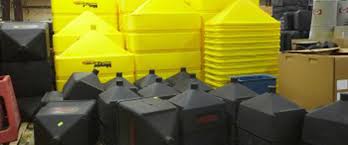Rotational molding, also called rotomolding, is actually a approach employed to produce hollow plastic-type material components. It is among the most functional and price-powerful manufacturing approaches currently available and it is widely used to create products like playthings, kayaks, coolers, gasoline tanks, and a lot more. In this post we will supply an introduction to the Rotational Molding procedure and the way it works.
The Process of Rotational Molding
Rotomolding entails the use of a hollow shaped resource or “mold” that is warmed up up with a specialised stove. The warmed up mold is going to be filled up with molten plastic granules that are equally spread throughout the mold by spinning it in 2 axes. Because the rotation persists, the plastic material melts and distributes itself evenly until it takes in the shape of the mold. After complete, the cooled aspect can be taken off from your mold for more finalizing.
Features of Rotational Molding
Rotational Molding gives several advantages over standard injection molding techniques which include lower cost tooling and faster creation occasions. Moreover, because there are fewer transferring pieces involved in rotomolding when compared with injection molding equipment, there is significantly less chance of breakdowns or expensive repairs due to wear. Finally, rotomolding can develop big components with sophisticated forms that could otherwise be impossible to produce using standard injections molding strategies.
Supplies Used in Rotational Molding
Rotomolding can be used with numerous components which include polyethylene, polypropylene, nylon, and Pvc material. Every material possesses its own unique components causing them to be suited to distinct applications such as health care units or customer items. For example, polyethylene has superb impact level of resistance while polypropylene is lightweight but nonetheless gives great strength and tightness. Nylon material is usually used to create elements which need high warmth amount of resistance while PVC has great chemical amount of resistance so that it is well suited for apps where corrosive chemical compounds can be existing.
Summary:
Rotational Molding is an effective approach to produce hollow plastic material elements quickly and price successfully. It includes several benefits over classic injections molding procedures such as less expensive tooling expenses and faster production times. In addition, simply because a lot fewer moving parts take part in rotomolding compared to shot mold devices there’s much less chance of breakdowns or high priced repairs due to use-and-tear over time. And finally different types components may be used according to what kind of software you will need like polyethylene for effect resistance or nylon material for heating resistance etc.. If you’re looking for the best productive way to produce your plastic-type products check out rotational molds!


